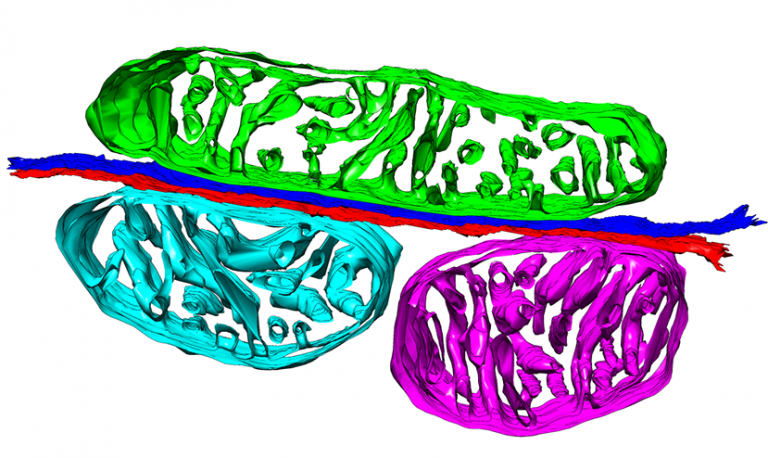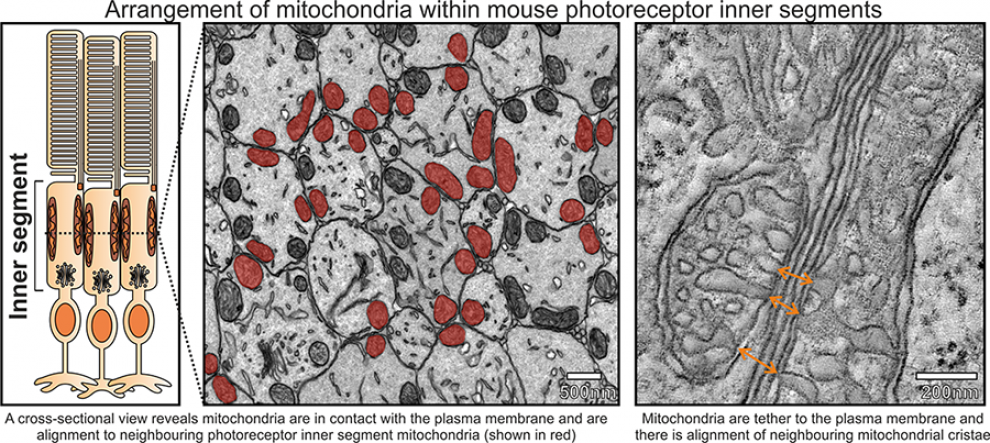Mitochondria assist in maintaining homeostasis across the photoreceptor cell layer
30 June 2020

A new article recently published in PNAS (Proceedings of the National Academy of Sciences of the United States of America) highlights the role for the specialised arrangement of the mitochondria in photoreceptor health and disease. The paper, "Symmetric arrangement of mitochondria: plasma membrane contacts between adjacent photoreceptor cells regulated by Opa1" presents the results of a study led by IoO's Dr Thomas Burgoyne and coauthored by Prof Mike Cheetham.
Approximately one in 5,000 individuals suffers from genetic mitochondrial disease and mitochondria play an essential role in the function and wellbeing of the high energy-demanding visual system.
Vertebrate photoreceptors have a greater energy consumption than any other cell type in the body. When they are unable to fulfil their energy requirements often visual problems arise, including blindness, such as in dominant optic atrophy. The inner segment region of the photoreceptors contains elongated mitochondria that provide the necessary energy (in addition to aerobic glycolysis) for cellular function. This study examines the specialised arrangement of mitochondria within mouse photoreceptors inner segments by three-dimensional electron microscopy.
In photoreceptor inner segments mitochondrial make contact with the plasma membrane through extensive tethering. Remarkably, these tethers link mitochondria to the plasma membrane in photoreceptors to form a striking alignment of mitochondria, and even their cristae, between cells. When looking at a model of dominant optic atrophy there is reduced alignment of neighbouring inner segment mitochondria. This indicates a role for the specialised arrangement of the mitochondria in photoreceptor health and disease.

This highly specialised arrangement of the mitochondria and their cristae has not previously been reported and suggests a form of communication between photoreceptors. There appears to be disruption of key regulators in maintaining the specialised mitochondrial arrangement in the blinding disease dominant optic atrophy.
Links
- Research paper published in PNAS.
Images
- Credit Thomas Burgoyne
 Close
Close

